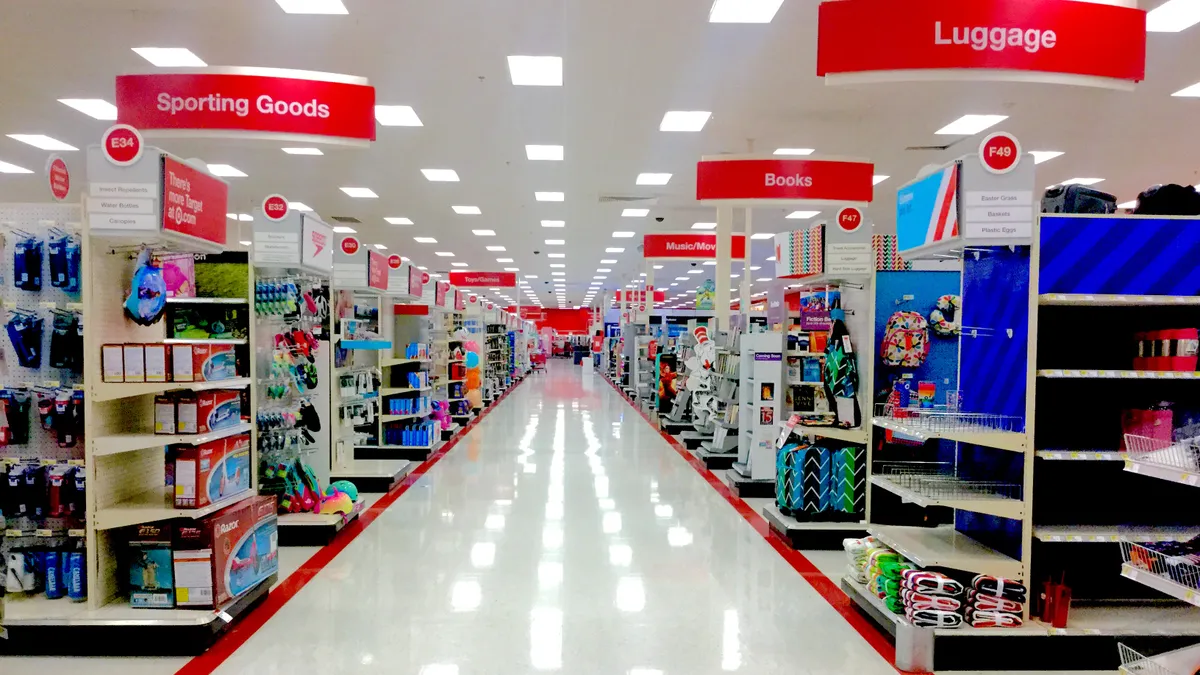Dive Brief:
- Target said Tuesday it intends to hire more than 130,000 seasonal employees for the upcoming peak season, with 8,000 of the roles in distribution and fulfillment centers. The figures are an increase over last peak season, when Target hired 120,000 employees, with 7,500 of those at distribution and fulfillment centers.
- This year's seasonal hiring includes double the number of roles specifically focused on fulfilling e-commerce orders from Target brick-and-mortar stores.
- Seasonal employees will earn at least $13 per hour. The retailer raised its minimum wage to $13 per hour in June and plans to raise it to $15 an hour by the end of next year.
Dive Insight:
Target is doubling down on a store-centric fulfillment model, and the retailer's hiring plans for peak season reflect a commitment to that strategy. The retailer did not provide a number for how many roles would focus specifically on e-commerce fulfillment from stores. "The number of team members focused on fulfillment from our stores varies by market and each store’s specific needs," a spokesperson for Target told Supply Chain Dive.
The retailer has so far seen success in moving e-commerce fulfillment from upstream distribution centers to stores. Earlier this year, CEO Brian Cornell said the shift resulted in a 40% cost reduction in overall fulfillment and a 90% reduction for same-day fulfillment costs, which include Order Pickup, Drive Up and Shipt. The same-day options are growing at twice the rate of last year and make up about one-third of the retailer's total fulfillment. Last month, Target announced it had expanded its Drive Up service to all 50 states.
Despite this success, Target continues to fend off analyst suspicions about the long-term viability of a store-centric fulfillment strategy at scale. "One form of the question is to ask if this strategy is only feasible when Target's digital sales are still small," COO John Mulligan said on an August earnings call. "My first reaction is to wonder if it's appropriate to consider digital sales of well over $5 billion to be small."
With the new bar set at 1-day shipping, this peak season will serve as a test of what types of fulfillment models best serve retailers as they seek to satisfy consumer demands for fast fulfillment and delivery — at much higher volumes than the rest of the year.














